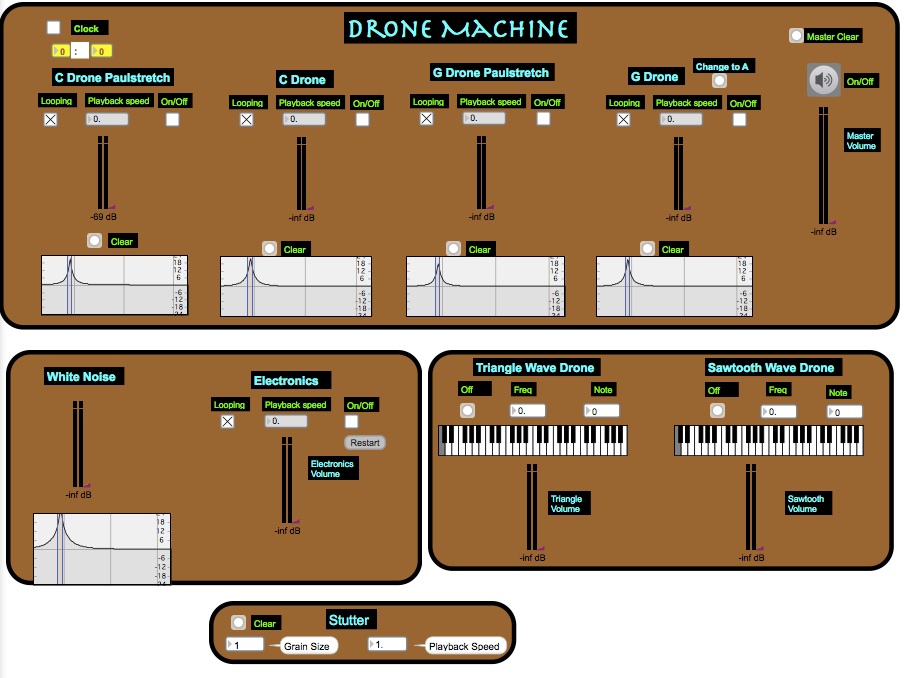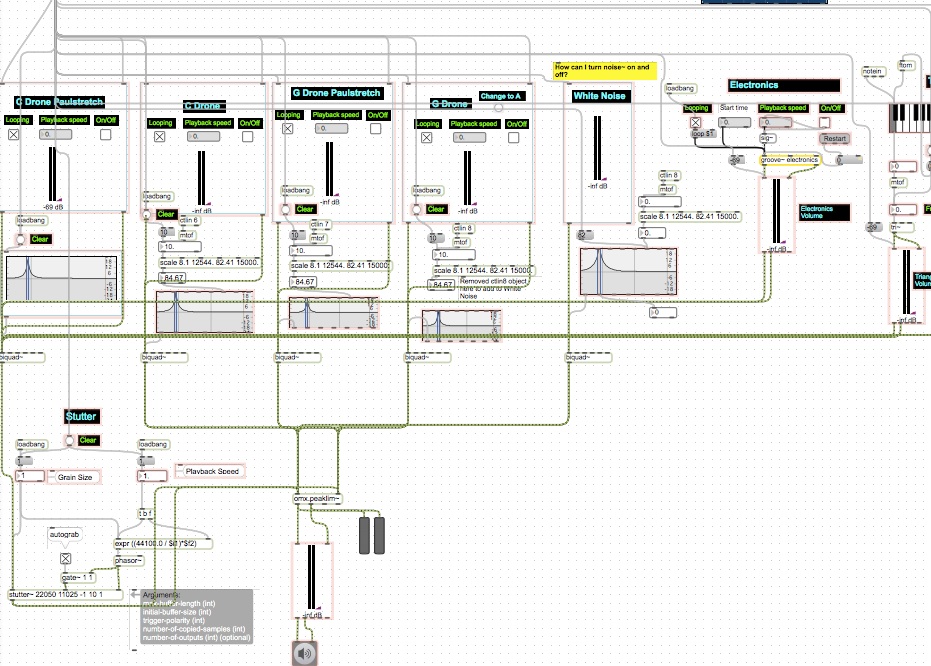Recently I’ve posted on this website a series of pieces using an electronic instrument I designed in Max. It’s called the Drone Machine, and here’s a screen shot of the playing surface:
This surface hides the construction of the instrument, which under the hood looks in part like this:
Basically, with the Drone Machine you can play pre-recorded drone sounds, white noise, some other electronic samples, and some old-school synth sounds. The graphs you see allow you to filter the harmonic spectra of the sounds interactively, and the controls on the bottom allow you to apply some granular synthesis. A MIDI controller makes it easier to use the instrument but is not required.
What does this sound like, you ask? Well, it depends on the piece! The first piece in the series is Bordone (2012), for violin and laptop. The laptopist uses the Drone Machine. Here’s Mark Davenport playing the Drone Machine, with me on the violin:
Next came Bordoncello (2014), for cello and laptop. Again, the laptopist uses the Drone Machine, and also plays a telephone pick-up over the laptop to generate some pretty wild electronic sounds. Here’s Richard vonFoerster on cello and me on the Drone Machine/telephone pick-up:
[youtube https://www.youtube.com/watch?v=g8wIbt9fFhs]
Then, there’s How’s All to One Thing Wrought (2014), which is for Drone Machine alone, and uses only one sample, the low C on the cello, manipulated in various ways. Here’s me on the Drone Machine:
Finally, I wrote Bordonquartet (2014), for string quartet and Drone Machine, plus telephone pick-up sounds again. This is the Spektral Quartet and me:
The word “bordone” means “drone” in Italian. I chose Italian for the title because the Max workshop I took in Italy in 2012 got me started down the path toward these pieces. While each one uses drones, the pieces differ in many important respects. And because they are largely improvised, they are also different each time they are played. I find this combination of improvisation and droning musically powerful, and I hope you enjoy the fruits of my exploration of these ideas.
Recently I was asked if the Drone Machine was available for other people to use. You can order the Max patch (“patch” is what Max calls its files) from this page — just choose one of the Bordone series of pieces to purchase and I will send you the patch, the sound files that go with it (though you can use your own if you prefer), the text-based score for the piece, and some instructions.

